Public "Art" at LSE
During the past couple of months, several weird sculptures have popped up around the LSE campus.
Before moving on, click here to open the map of the LSE campus in a seprate window to understand the location of each sculpture .
It was a couple of months ago that a penguin and a baby elephant suddenly appeared on Clare Market (a street between the Old Building and St Clement's Building). Look at this: 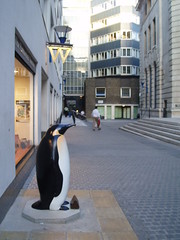
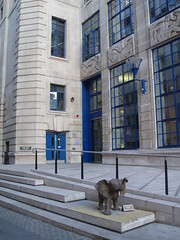
Do you think these two sculptures have improved the landscape? I seriously don't think so. First of all, the color of these sculptures, especially the penguin, does not match the landscape at all. Second, this is NOT art at all. It's just animals that we are used to seeing at a zoo or on television. It does not evoke any new sensation. I really thought that vandalism wouldn't be a public nuisance in this case.
The LSE didn't stop there. At the centre of John Watkin's Plaza, a newly-paved square in front of the Library building, a weird sculpture was erected a couple of weeks ago. Look at this: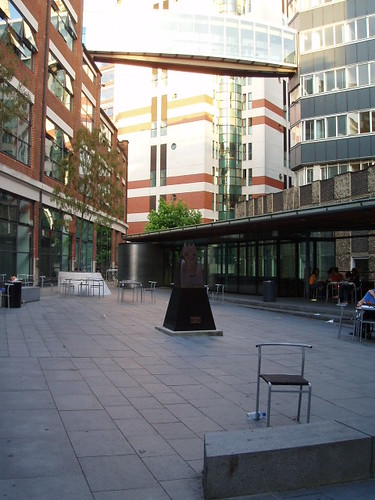
Can't see it clearly? Let me zoom it up: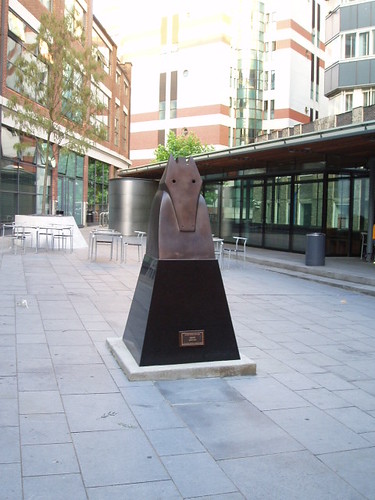
Do you think this fox head has improved the landscape? I seriously don't think so. I liked John Watkin's Plaza. Its design is quite contemporary. With this sculpture standing at the centre, however, the Plaza has become a very dull public space that you can find anywhere else. You certainly know at least one public space where a weird, incongruent public art scuplture stands at the centre, don't you?
A few days ago I realized that the LSE has erected 12 sculptures in total around the campus. From which I learned that the disgusting sculptures outside Tower Three were also part of this public "art" project. Look at this: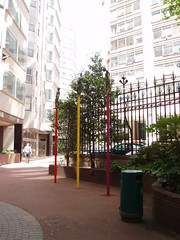
Do you think this contemporary(?) sculpture has improved the landscape? I seriously don't think so. Again the colour of these three poles DOES NOT match the landscape AT ALL. Plus what's on the top of each pole is this:
Hedious. Absolutely hedious.
This passage called Clement's Inn is just next to the Royal Courts of Justice. Entering from the Strand, it's quite nice a view: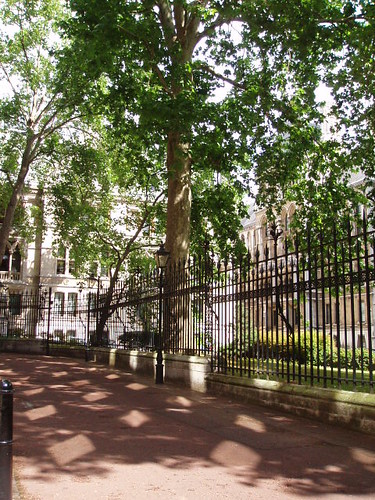
But if you keep walking, then you'll see
and 
Worse, at the other end of Clement's Inn sits an eagle head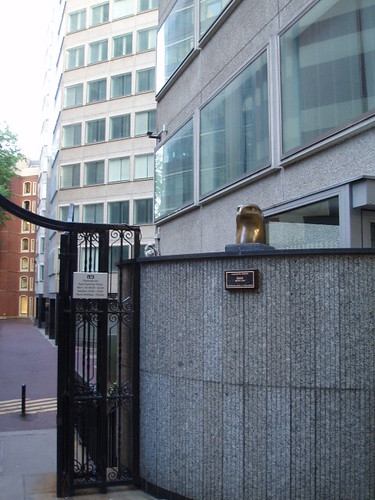
WHY ARE THEY ALL ANIMALS?
Admittedly, the location of each sculpture seems to be a solution to the contrained optimization problem - choosing the best combination of a sculpture and a place among sculptures donated by Canadian businessman Louis Odette (according to the LSE's explanation) and locations within the LSE campus. Each scuplture is erected at the best place around the campus. I would like to take my hat off for the LSE staff in charge of this decision. But this is a solution to the CONSTRAINED optimization problem. If the choice set of sculptures hadn't been limited to those donated by Louis Odette, the LSE staff wouldn't have chosen these ANIMALS. If the choice set hadn't been limited to the LSE campus, these sculptures would have been erected somewhere FAR AWAY from the LSE campus.
True, this kind of thing is a matter of personal taste. I don't like them, but somebody else might like them. I'm sure Louis Odette - "a noted patron of sculptures to public spaces" according to the LSE's plea - likes them.
Why don't you just appreciate them in your personal space, rather than forcing people to appreciate them in public spaces?
I would like to know what you would say. Am I the only person who is strongly offended by these ANIMALS? Leave your comment, please.
1 comment:
It takes an economist to point out that this is a space optimisation problem.
I find it bizarre that there is no sign of a Beaver - the random Penguin seems like a chocolate ad. The Indian elephant would have been better than the fox.
I can see how it will be useful though...
Instead of saying meet me at Connaught Hall or Kingsway 2b we can now say meet me at Elephant at 2!
Post a Comment